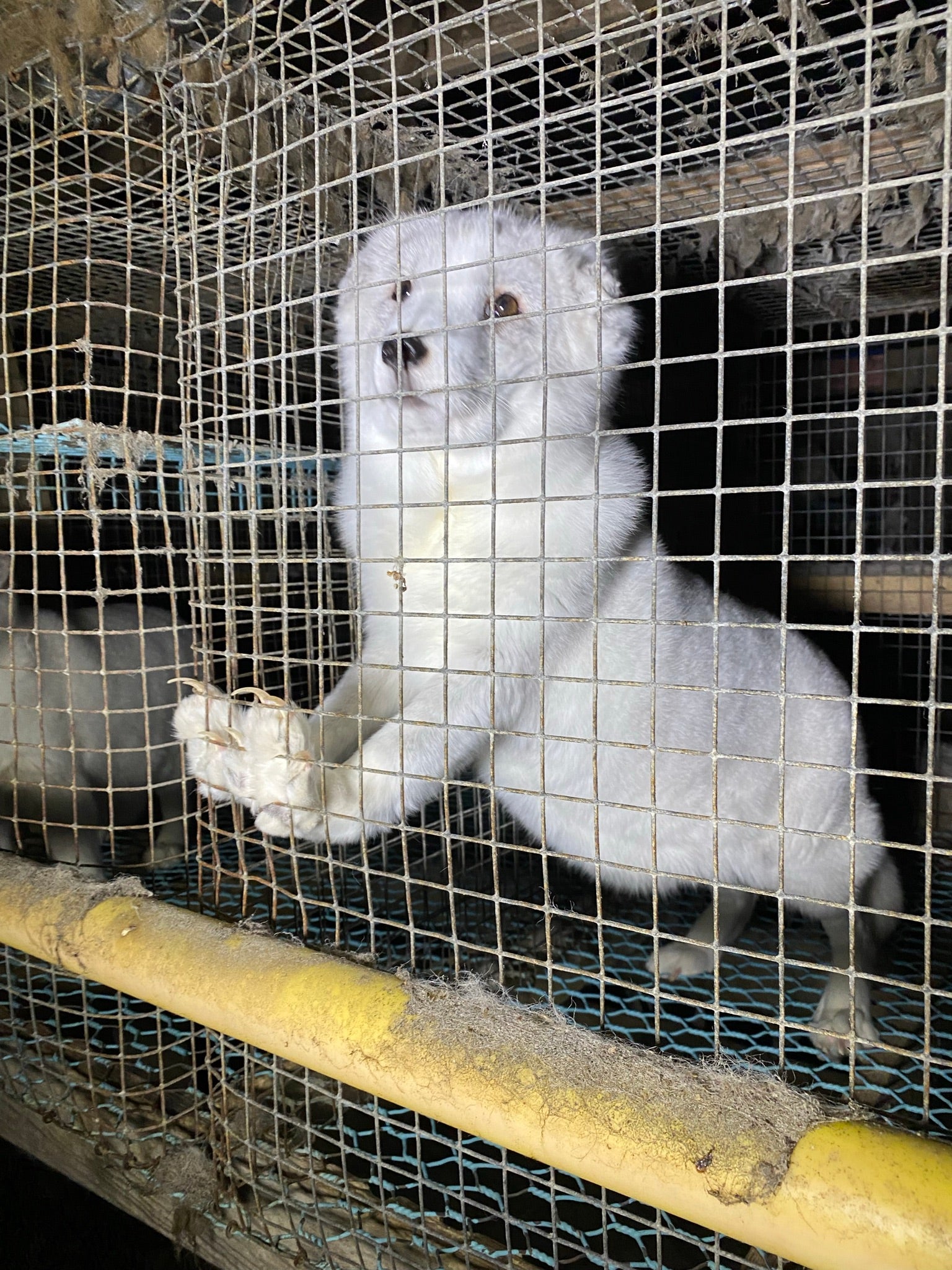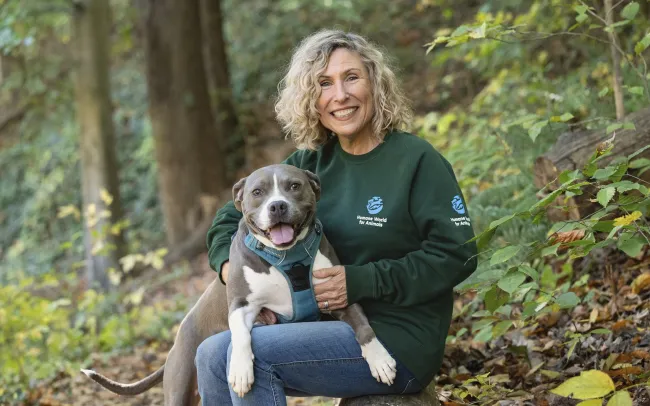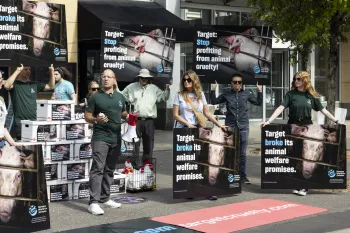Note: This blog is part of a series highlighting how we tackle the root causes of animal cruelty to create permanent change. This post focuses on how we’re ending the worst forms of institutionalized animal suffering by working with corporations. Our previous post in this series covered our efforts with governments and legislative bodies.
It wasn’t so long ago that the pages of fashion magazines and the collections of major fashion houses showcased models draped with animal fur. I can remember when fall high-fashion in Boston meant women stepping out proudly in full length fur coats.
Today, though, celebrities photographed in mink coats are more likely to be called out for supporting animal cruelty than lauded for their fashion sense. Over the past few decades, public perception of animal fur has changed from seeing it as a status symbol to a product of animal cruelty and wasteful excess.
Since 2015, dozens of major fashion brands and retailers all over the world have announced fur-free policies. Some have embraced eco-friendly alternatives; others have dropped the look entirely. We’ve had a hand in nearly all of those wins, and we’re not done yet.

Claire Bass/HSI
Just as you use the power of your dollar to support companies that make cruelty-free personal care products, food and more, we also support corporate policies that lead to progress—on a larger scale. For example, we know that the largest purchasers of factory farmed products aren’t individual consumers like you and me—they are food service companies, restaurant chains, grocery stores and other supply chain and retail outlets. We can give billions of animals the better lives they deserve by convincing those companies to mandate change in their supply chains.
For example, by persuading McDonald’s to announce a 100% cage-free policy for its eggs in many regions where the company operates, several million hens will be freed from tiny cages each year. This means that the restaurant chain’s suppliers—i.e., factory farms—need to eliminate cages to keep McDonald’s (and other companies with cage-free commitments) as buyers. The result? Tens of millions of chickens with more room to spread their wings, take dust baths and more.

Julie Janovsky/HSI
As seasoned campaigners, we sometimes use pressure tactics when corporations resist the march of progress. Our campaign to get Corteva (formerly Dow AgroSciences) to end a one-year pesticide test on dogs led to the release of over 30 beagles and a groundswell of public support for ending animal testing. Corteva is now working alongside us and others to end pesticide testing on dogs entirely.
We don’t just secure commitments and then walk away. For example, our international team works closely with corporate top management, sustainability and procurement teams to implement those commitments. The power of companies to drive change on the farm is critical to achieving our goal of a cage-free world. That’s why we connect companies with cage-free farmers, and train farmers on how to transition to cage-free production both from a technical perspective and by bringing them together with financial institutions that incentivize higher welfare in their lending and investment practices.
If and when corporate leadership fails to engage, our skilled litigators hold corporations’ metaphorical feet to the fire, ensuring they carry out their promises. For example, although McDonald’s has made progress toward cage-free eggs, it had been too slow to end the use of gestation crates for mother pigs—despite promising to do so repeatedly. In response, we filed a complaint with the Securities and Exchange Commission, asking them to investigate, which resulted in some good progress for pigs. And this year, we exerted pressure on Target to keep its animal welfare promises.
This work has meaningful downstream effects beyond the obvious. We’ve seen corporate commitments lead to advances in public policy time and time again, as legislators recognize that the business community and the public support and expect to see animal-friendly outcomes. Just a few examples: As more U.S. states pass bans on keeping hens in cages, we can now see an end to the cage age in the not-so-distant future in the U.S. According to the latest figures from the U.S. Department of Agriculture, close to half of the egg industry is now cage-free, and that percentage continues to grow. And to return to the case of fur, we’ve now seen California, Israel, Switzerland and several major U.S. cities pass various bans on fur.
When I consider how much closer we are to living in a fur-free world, I see a clear path forward for all our campaigns. I see a future where products and their ingredients are never tested on animals. I see more pet stores that feature adoptable animals, not puppies and kittens from mills. I see restaurants and grocery stores and cafeterias that serve more and more plant-based meals alongside products from animals raised outside tiny cages.
You invest in this future every time you open your wallet. We help make it happen by working with corporations to overcome barriers and adopt cruelty-free methods and business practices. Together, we’re building a better, kinder, more humane world.
Kitty Block is president and CEO of Humane World for Animals. Follow Kitty Block on X.



